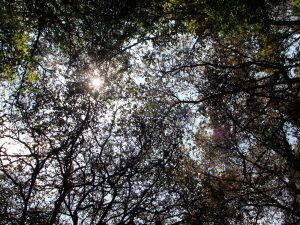October 17th, Day of the Protected Areas of Latin America and the Caribbean
On October 17th, 2019, during the III Congress of Protected Areas of Latin America and the Caribbean (CAPLAC), the Chilean Juan Carlos “Teo” Pacheco Aguirre proposed that a Day of Protected Areas of Latin America and the Caribbean be declared, a day to recognize the importance of protected areas for the well-being of people and sustainable development in the region.
This initiative was joined by a variety of Latin American international conservation entities. The International Union for the Conservation of Nature (IUCN), SERNANP Peru (National Service of Natural Protected Areas by the State), RedParques (Latin American Network for Technical Cooperation in National Parks, other Protected Areas, Wild Flora and Fauna), FAO (United Nations Food and Agriculture Organization), RELLAC-Joven (Network of Young Leaders in Protected and Conserved Areas of Latin America and the Caribbean), among others.
In the first year of celebration of this date, countries such as Guatemala, through the National Council of Protected Areas (CONAP), and Costa Rica, through the National System of Conservation Areas (SINAC), joined in highlighting the importance of the protected areas for the conservation of biodiversity and life in the Latin American continent.
“The Guatemalan System of Protected Areas (SIGA), seeks the establishment of the necessary protected areas in the national territory, with a character of public utility and social interest, and their development within a system of protected areas, also plans and coordinates the application of the provisions on the conservation of Biological Diversity contained in international instruments ratified by Guatemala. Since its creation, SIGAP has been evolving and incorporating more and more land and marine hectares, under different categories of protected area management,” said CONAP in a public note.
SINAC, for its part, highlighted the importance of protected areas and the work that Costa Rica has carried out since the 1970s, with the celebration of the 50th anniversary of El Tortugario National Park.
Protected Areas of Central America

The forest communities of Petén carry out an integral management of natural areas for their sustainable development. Photo: Jorge Rodríguez/Viatori
Central America has approximately 411 protected areas in 18.6% of the regional territory. The current proposals would add 391 additional protected areas to those that are declared. The seven countries of Central America occupy in protected areas, barely 0.51% of the planet’s emerged territory, which means 9% of the world’s biological wealth.
A little more than 40% of the protected territories are in border areas, and that is where the Mayan Forest of Guatemala, the Caribbean forests of the two Nicaraguan and Honduran borders, as well as the Panamanian Darien are located.
Central America has 43 sites with international designations, 9 Natural World Heritage Territories and 9 Biosphere Reserves.
Some cases are the Reserve of Man and the Biosphere of Río Plátano in Honduras that has more than one denomination; as a Biosphere Reserve and as a Natural World Heritage Site. Another case is the Maya Biosphere Reserve in Guatemala, which contains other protected areas that also have an international declaration, such as the Tikal National Park, a Mixed World Heritage site, and the Laguna del Tigre National Park.
